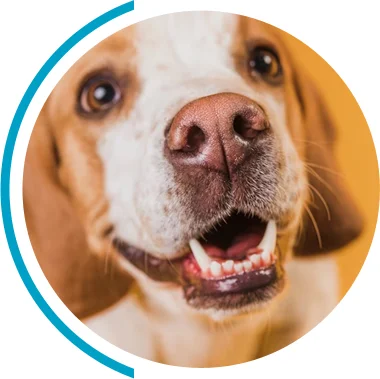One of the most challenging behaviors dog owners face is separation anxiety. In Santa Clara, where many families have busy lifestyles, understanding how to manage and train this condition is crucial. This article explores the symptoms, causes, techniques, and resources available for effective dog separation anxiety training.
Separation anxiety occurs when a dog experiences extreme distress upon being left alone. This is not merely a reaction to being lonely; it is a serious behavioral issue that can significantly impact both the dog’s well-being and the owner’s peace of mind. Dogs are social animals that thrive on companionship, and when they feel abandoned, their emotional responses can lead to a range of problematic behaviors. It’s crucial for dog owners to recognize that this condition is not a reflection of bad behavior but rather a sign of a deeper emotional struggle.
Recognizing the signs of separation anxiety is the first step in addressing the issue. Common symptoms include:
Each dog may exhibit different symptoms, and some may experience more severe reactions than others. For instance, a dog that is more sensitive may become withdrawn and refuse to eat, while another may resort to frantic attempts to escape. Understanding these signs allows owners to take the necessary steps for intervention. It’s also important to note that these behaviors can escalate if left unaddressed, leading to further distress for the dog and frustration for the owner.
There are several reasons why a dog may develop separation anxiety. Common causes include:
Understanding the root cause of a dog’s anxiety is essential for effective treatment and training. For example, a dog that has experienced a significant life change, such as moving to a new home or the loss of a companion, may require a different approach than one that simply struggles with being alone. Additionally, dogs that have been raised in environments where they were rarely left alone may need gradual desensitization to help them adjust to solitude. An owner’s patience and consistency during this process can make a significant difference in the dog’s ability to cope.
Moreover, it’s worth noting that early intervention can prevent the escalation of separation anxiety. Engaging in training exercises that promote independence, such as gradually increasing the time spent apart, can help dogs build confidence. Providing mental stimulation through puzzle toys or interactive games can also serve as a distraction during alone time, making the experience less daunting for anxious dogs. By addressing the issue proactively, owners can foster a more secure and relaxed environment for their furry companions.
Training is an integral part of managing separation anxiety. It fosters a sense of security for the dog and helps owners maintain peace in their home.
Training can greatly benefit dogs struggling with separation anxiety. Some of these benefits include:
Through consistent training, owners can help their dogs feel more secure when left alone.
Effective training doesn’t just address anxiety; it can improve a dog’s overall mental health. Engaging in structured activities and providing mental stimulation helps reduce stress while building self-confidence in the dog.
Regular training sessions help create routine and predictability, making the dog feel safer in its environment. This routine is vital in alleviating anxiety, as dogs thrive on stability.
There are various training techniques that can effectively help alleviate separation anxiety in dogs.
Gradual desensitization involves slowly getting your dog used to being alone. This can be initiated by:
This process helps the dog associate being alone with positive outcomes rather than anxiety and fear.
Counter-conditioning is another effective approach that alters a dog’s negative emotional responses. This can be implemented by:
These methods can help rewire how a dog thinks and feels about being alone, making it a more comfortable experience.
For many owners, professional assistance may be needed to effectively address separation anxiety. This is particularly true in severe cases where self-directed training isn’t yielding results.
When selecting a dog trainer, consider these factors:
A skilled trainer can provide tailored strategies that suit your dog’s unique needs and temperament.
During a training session, you can expect the trainer to assess your dog’s behavior and gather background information on the anxiety issues. Sessions commonly consist of:
This approach ensures you are equipped with the knowledge and skills needed to reinforce training at home.
After completing training, the real work begins. Maintaining progress is vital to ensuring long-term success.
Consistency is key. Your dog needs to experience the same training techniques in its home environment. This involves:
Routine is essential for reinforcing the positive behaviors that were established during training.
Lastly, consistently monitor your dog’s behavior and adjust your techniques as necessary. Look for signs of stress, regression, or improvement, and adapt training practices accordingly.
Establishing a journal of behavioral changes can be beneficial in tracking progress and identifying patterns over time.
In conclusion, managing dog separation anxiety requires dedication, empathy, and the right techniques. Santa Clara dog owners availing themselves of available resources, schedules for training, and support networks can create a more harmonious home environment for their pets and themselves.
If your beloved canine companion is struggling with separation anxiety, remember that you’re not alone. At The Grounded Hound Canine Coaching, we understand the challenges you’re facing. With a CTC from the Academy for Dog Trainers, an ABCDT from the Animal Behavior College, and specialized certifications in separation anxiety (CSAT and SA Pro), we’re equipped to offer you and your dog the support needed to overcome this distressing condition. Our approach is rooted in Patience, Kindness, and Consistency, ensuring that the bond between you and your dog grows stronger through positive training methods. Don’t let separation anxiety disrupt your life any longer. Contact Us Today and take the first step towards a more peaceful and happy relationship with your dog.

